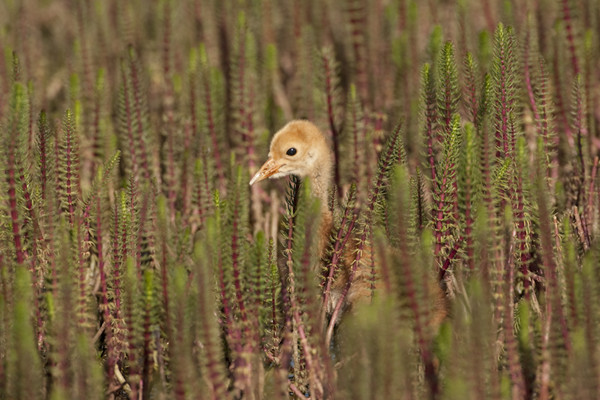Habitat is key
- By Liu Haile
 0 Comment(s)
0 Comment(s) Print
Print E-mail China Pictorial, September 4, 2013
E-mail China Pictorial, September 4, 2013
 |
|
Black necked Crane (Grus nigricollis), Southern Qinghai Lake, July 2007. [Photo/Xi Zhinong/WildChinaFilm] |
CP: Currently, what problems and challenges is China facing in terms of wildlife protection?
Fan: Back in the 1970s and 80s, poaching and logging were major threats to wild animals. The situation is different now. From the perspective of legislation, China's wildlife protection laws lag behind the times. For example, the list of animals under national protection has hardly changed in 25 years. The musk deer was promoted from second-class state protection to first-class, that's it. The list is supposed to be constantly updated according to results of wildlife monitoring. Moreover, the key to wildlife protection is habitat conservation. However, China's existing wildlife protection regulations only ban killing certain species and lack substantive content related to habitat conservation.
From the biological perspective, the major threat to wildlife conservation is a fractured habitat. Habitats are irreversibly fractured or fragmented by human activity such as highways, mining, and hydropower stations. Invasive infrastructure projects prevent relations between creatures in the area. Wild animals are fragmented into such small groups that inbreeding is unavoidable, resulting in a genetic drift, population decline and even extinction. This path is particularly lethal to large and medium-sized animals.
Wildlife trafficking is another major threat. For instance, a huge number of birds are still hunted during migration season even though China has asked the public not to eat wild birds and cracked down on bird poaching for many years. The country has formed a legal system for wildlife protection, but enormous room to strengthen enforcement still remains.
CP: What role have international conservation organizations like WWF played in China's wildlife protection?
Fan: Every international organization has its own specific focus, but commonalities they all share are bringing new ideas and concepts to China and serving as role models to inspire further efforts. WWF's first programme in China was for the giant panda. The needs of local residents were taken into account when the giant panda nature reserve system was constructed. Excessive exploitation of natural resources by locals has long been a threat to habitats of wild animals. To improve the situation, we introduced alternative livelihood approaches to maintain balanced development in local communities. For example, we founded an association in Sichuan Province to teach local farmers how to plant peppers and provided a special sales channel by collaborating with Carrefour supermarkets. Such programs not only boost local residents' income, but also enhance their awareness of nature conservation. Other projects such as fuel-saving stoves and micro-hydropower plants also help to improve the living environment of giant pandas.






Go to Forum >>0 Comment(s)